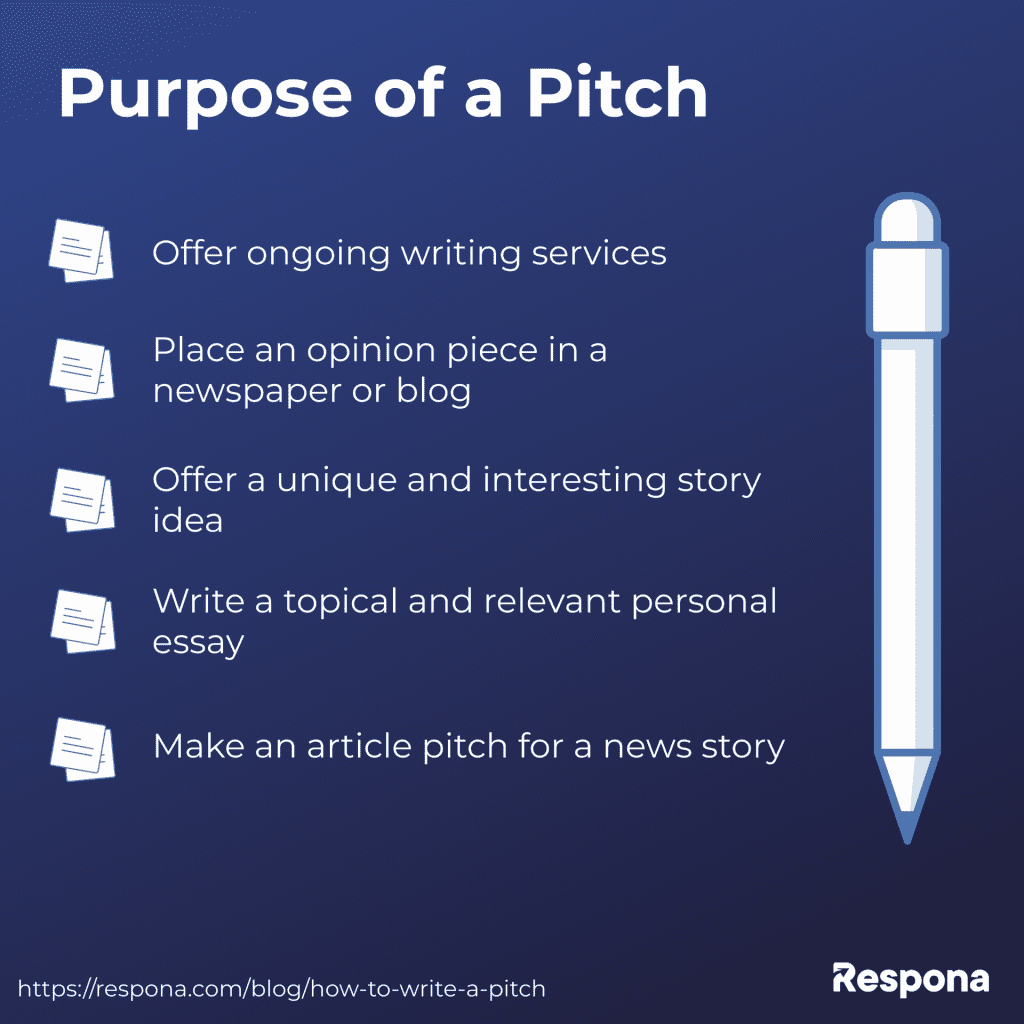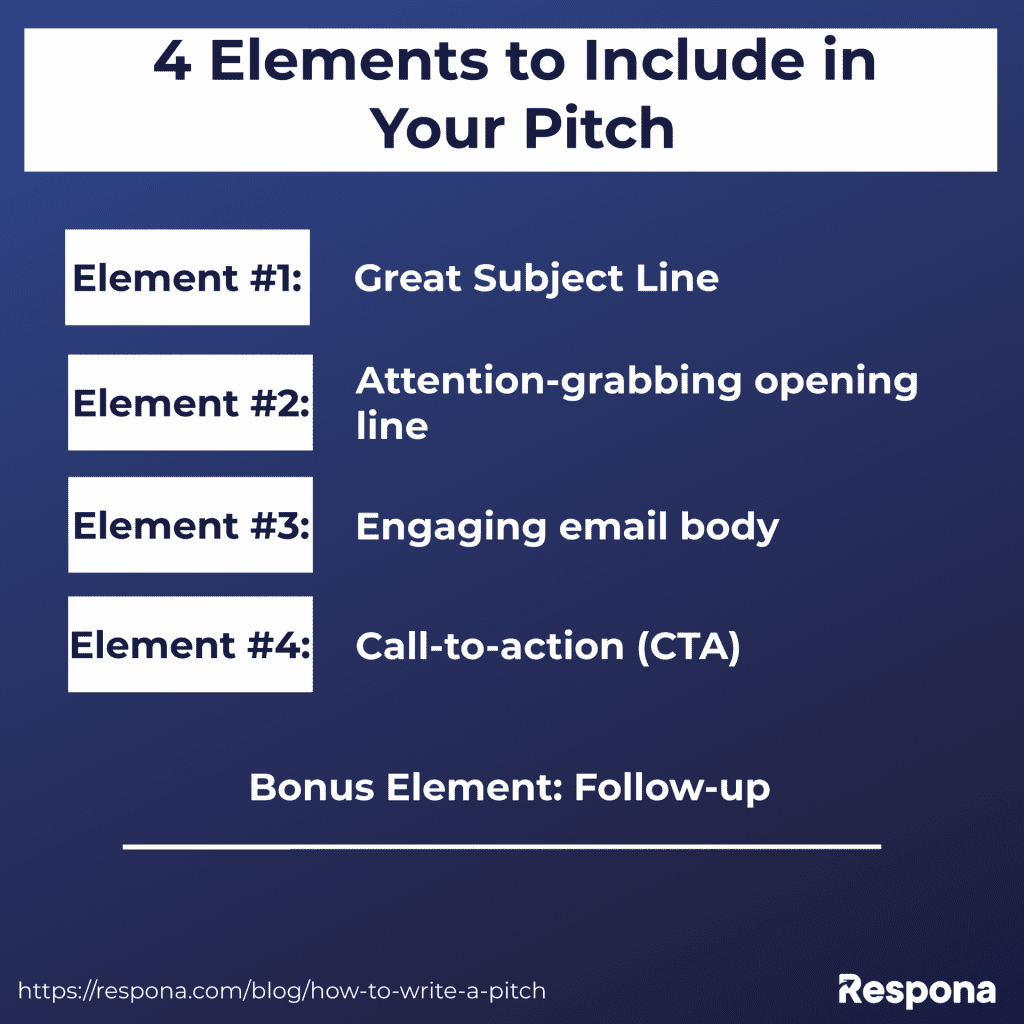Want to start pitching to publications and don’t know where to start?
Pitching can be a daunting process, with so many editors having different rules and guidelines.
Getting your business pitch whipped into shape and ready to get you the answers you’re looking for takes a little time but the pay-off should be worth it in the end.
When you’re ready to reach out to editors and publishers to get your writing or other content featured, you can use this guide, which covers:
- What a pitch is and some common questions about pitches
- What you need to do to prepare to write your pitch
- The four key elements of a successful pitch
And we’ll wrap up with some great real-world examples that really hit the mark with the receivers.
Ready? Let’s go.
Link building cheat sheet
What is a Pitch?
A pitch to an editor is your proposal to create content for their website or magazine, asking them to cover your event, or sharing newsworthy information such as a press release and why it’s a perfect match for your target publication.
There are other types of pitches such as:
- A sales pitch for a potential client
- A pitch for a potential investor
- A collaboration pitch
But here, we’re going to focus on how to write a pitch for your creative assets to be included on a blog, news site, or print magazine.
When you’re writing a pitch to an editor, you’ll be offering things like:
- Writing a guest blog post for their website
- Placing an infographic you’ve created into one of their articles
- Featuring your event or product launch on their blog
- Including your article in their industry round-up newsletter
Put simply, when you’re asking for your content or product to be featured by an editor or publisher, you’re making a pitch.
How long should a pitch be?
A pitch should be as long as it needs to be to grab the attention of the editor or publisher and get across all the details that you want to include.
There’s no hard and fast rule about how long a pitch should be; in fact, if you ask ten editors what they’d expect you’ll likely get ten different answers.
When the public relations and SEO agency Fractl asked a few hundred editors and publishers about preferred PR pitch length in a recent study, they found that more than half wanted a pitch to be 100-200 words.
When you write a pitch, a good sample pitch template to use would be:
- Grab the editor’s attention and tell them why your pitch is important
- Tell the editor why your article, blog post, infographic, or event needs to be covered
- Give details about the potential title, word count, interviewees
- Pitch yourself and why you’re the perfect person to produce the content
This format could lead your pitch to be a couple of hundred words, up to 500-600 words even.
A good pitch is clear, concise, and to the point; you want the reader to know exactly what you’re pitching and why they want to keep reading, so use only as many words as necessary.
An editor doesn’t want to read 1,000 words about a 500-word article you’re pitching!
What is the purpose of a pitch?
The purpose of a pitch is to get the attention of the editor and publisher, tell them what you’re asking from them, and let them know why you’re perfect for the task.
If you’re pitching for a freelance writing job interview, the purpose of your pitches will be to land a commission from an editor to write an article or related post for their publication.
Working in content marketing, your pitch to an editor might be to ask to place a guest post on their website.
When you want to generate media coverage for your brand or product launch, the purpose of your media pitch will be to ask a journalist to tell their readers about it.
Long story short, your media pitch needs to be eye-catching and interesting so that the editor reading it says “yes” to what you’re asking for.
Steps to Take Before Starting to Write your Pitch
Writing pitches can seem like a daunting task – you’re reaching out to someone you don’t know to ask them to help you or your business.
To help make the process of writing an effective pitch email simpler, we’ve broken down how to prepare your pitch into a step-by-step process.
Don’t worry, we’re looking at what goes into the email pitches you’re preparing for in the next section.
Let’s get into it.
Step #1: Consider the purpose of your pitch
The very first thing you need to understand about your pitch is what you expect the outcome to be.
How you compose your first pitch, whether you’re freelancing, an entrepreneur, or working in a marketing team, is all going to depend on what you’re pitching to an editor.
The purpose of your pitch might be to:
- Offer ongoing writing services
- Place an opinion piece in a newspaper or blog
- Offer a unique and interesting story or article idea
- Write a topical and relevant personal essay
- Make an article pitch for a news story pitch

With each option needing a slightly different angle or approach.
The information you’ll include in each will be different, too, for example, the details you give and the reason why you’re the best freelancer or brand to work with the editor will change depending on the purpose of your perfect pitch.
Moving on to the next step for writing your pitch letter or email.
Step #2: Consider your target audience
It’s likely that you’ve already researched the target audience of the publication you’re reaching out to, but that’s not the audience for your pitch.
You need to think about who is going to read your pitch; are they a Millennial who’ll fully understand your pitch about a guide to digital marketing or are they a fashion editor with the New York Times who knows designers?
Use social media like LinkedIn to find out who you’re pitching to and personalize your pitch.
Sending a personalized email pitch means you’re much more likely to get a response; in a study by Backlinko, emails with personalized information in the body of the text received more than 32% more replies.

By learning a little about who you’re talking to, you can find common ground and make sure the benefits of your writing or product are easy to communicate.
You also want to make sure your pitch is relevant to the content the editor works with.
Pitching a story about this season’s eye makeup trends to Forbes or trends in cryptocurrency trading to Psychology Now doesn’t make sense – you need your great story to be a great fit for the publication.
The next step in our guide to how to write a media pitch is coming up.
Step #3: Find the right person to contact
You know what you want the result of your pitch to be and where you’re going to send your email, now you need to find the right person and their contact details.
Sometimes, it can be a challenge to find the publisher of a website, let alone find the email address for the person you want to pitch to.
Some publications and potential writing gigs will have submission guidelines when they invite pitches, but not all media outlets have these available.
The easiest way to find the right person to make your cold pitch to is to use a modern outreach tool like Respona.
It can save you hours of digging around websites and social media profiles trying to find the contact information for an editor or media contact so you can focus on honing your business or freelance pitch.
With your plan of action at hand, you’re ready to craft your cold email pitch for the first time.
4 Elements to Include in your Pitch
You’re ready to flex your writing skills and craft your email pitch to an editor or publisher.
Successful pitches have a few key elements in them, so we’re going to go through each and give you some examples that you can personalize and customize depending on your use case.

Let’s start with how you look in your recipient’s inbox.
Element #1: Great subject line
Before you even get to your 30-second pitch in your email, you need to have a killer subject line to arouse curiosity.
There are lots of theories about what makes a good subject line for an email – one point that’s backed by data is that you should be personalizing your subject line.
In the same Backlinko study we looked at earlier, it was also found that you’re up to one-third more likely to get a response to an email with a personalized subject line.

You want to explain what your email is about without getting lost in the noise of a busy inbox.
A couple of examples might be:
Example #1:
Subject: {Editor's name}, I have a story about sustainable development in Bolivia
Example #2:
Subject: I'm launching (product name), want to cover the party, {Editor's name}?
Once the email is open, you need to pull out your copywriting skills.
Element #2: Attention-grabbing opening line
Think of your opening line of a cold pitch email like your 30-second elevator pitch, but in writing.
You want to pack into your opening line exactly what value proposition you have for the editor and show them that you’ve already done your research about their publication and your topic.
Here are some examples you can personalize.
Example #1:
Subject: Subject
Hi {Editor’s name},
[Your name] from [your company or blog] here. The articles you’re putting out about getting the most out of social media content are super engaging. I’ve been blogging about hashtag research recently and would love to place a guest post on your site.
Example #2:
Subject: Subject
Hi {Editor’s name},
I’m [Your name], a freelance writer covering all things business procurement for the last four years. I’d love to talk about a good idea I have for your supply chain tab on your website blog.
Moving on to the longer version of what you want to tell them.
Element #3: Engaging email body
The main body text of your email is where you get into the juicy details.
Remember the four-paragraph structure we outlined earlier?
This is the point where you customize the structure for your needs and tell your prospect why they should be working with you. You want to really make your case here so be sure to talk about your strengths. Use similes to incorporate figures of speech while still seeming professional. Be as engaging as possible.
You’ve already covered the first point and grabbed the editor’s attention with the topic of your pitch in your opening line.
Next, you need to talk about the value of your content for the publication’s audience; has your link building-strategy seen impressive results that you want to share or is your new product solving a pain point in a novel way?
In the next paragraph, you need to get into the details of the article or content you’re pitching, such as a suggested headline, original data you’ve compiled, or which industry experts you’re going to interview.
Use a couple of sentences or add bullet points for this information – it’s where you can show your work will be thorough and to the standard the editor expects.
Finally, you want to give elevator pitches about yourself, including information about your social media followers, blog readers, and how you’re an authoritative voice in your niche.
We’ve covered the details of what goes into an editor’s pitch, now to close it out.
Element #4: Call-to-action (CTA)
As you bring your pitch email to a close, you need to be really clear about what you’re asking the editor or publisher to do.
A strong and simple CTA with an active verb will improve your chances of getting a response to your query letter.
The purpose of your pitch will be encapsulated in your CTA, and we’ve got some examples.
Example #1:
Here’s my calendar link, let’s set up a call to talk in more detail.
Example #2:
Get back to me with your thoughts and we can get started.
From here, you then need to add your name, relevant contact information, and professional social media handles.
Whether you then send your pitch manually or create an outreach automation to contact lots of editors and publishers at once, this is the time to send that email and wait.
What to do if you don’t like waiting is our bonus element.
Bonus Element: Follow-up
Once your pitch has been sent, you have to wait for the responses to come in.
Sending one email will likely get you a response rate of around 8.5%, according to the same Backlinko study we’ve already looked at.

However, when you include a follow-up email, that response rate jumps to 14.1%.
Pretty impressive for sending just one more email, right?
A follow-up email helps the recipient remember your name and you could catch them at a less busy time when they can give your pitch the attention it deserves.
Including a follow-up email in your writing pitch will boost the chance that your efforts will be successful.
Time to see some real-world examples of a good pitch.
3 Great Pitch Examples for Businesses
You’ve got the theory of how to write a pitch, some examples will bring the concepts to life for you.
We’ve got three examples of pitches that landed the freelance writer exactly what they were looking for.
Check them out.
Media Pitch Example #1: Yellow Octopus
Matt Lawry is the owner of the Australian gin company Yellow Octopus.

As you can see in his email, Matt was pitching a piece of content he wrote and was asking editors and publishers if they were interested in sharing his work.
The pitch is personalized, has relevant details, and has a simple CTA, asking the recipient for their thoughts on the work.
Simple and effective – his content marketing campaign helped him boost the number of websites that linked back to his piece.
The chart below shows an increase in referring domains just a couple of months after the content was published and – we can only assume – he started sending his pitch emails.

Let’s see what a successful media pitch email looks like.
Example #2: PadPressed
Jason L. Baptiste worked on PadPressed, an app that helps websites look like iPad apps, back in 2010.
Although it was a while ago, a good pitching style doesn’t age, and his email to TechCrunch to promote his product is really good.

Jason was pitching a product launch with an exclusive and got right into the offer – “free reign on an exclusive” – before detailing his product’s benefits in terms that would appeal to the average TechCrunch reader.
His pitch paid off and the product was indeed featured in TechCrunch soon after the email was sent.
Want to see another example?
Example #3: John Corcoran
John Corcoran is an entrepreneur and freelance writer for publications like Forbes who made a pitch to Noah Kagan, the owner of AppSumo.

His pitch was about asking for an interview so he could write an article rather than a pitch to an editor, but he used the same principles.
He starts out grabbing Noah’s attention, gives the idea, goes into details, and finishes with a CTA.
Those post-scripts that he added also emphasized that John and Noah moved in the same circles and had a couple of mutual acquaintances, showing that he really did his research.
The email pitch worked and John was able to land an interview with Kagan for his article.
That’s how it’s done in practice, let’s bring this to a close.
Link building cheat sheet
Now Over to You
Now you have everything you need to write a perfect pitch to an editor.
Along with a solid definition of what a pitch to an editor is, we’ve given you the steps you need to take to get ready to write your pitch and some solid guidance on all the different elements on a pitch.
We hope the examples that we’ve given you help you see how a simple pitch can be really effective and help you achieve the results you want – landing the article, story, or writing gig you’re looking for.
Want to streamline your outreach process?
Here at Respona, we have all the tools you need to automate your cold outreach to editors and publishers.
Start your 7-day free trial and see how it can work for your pitching process.






